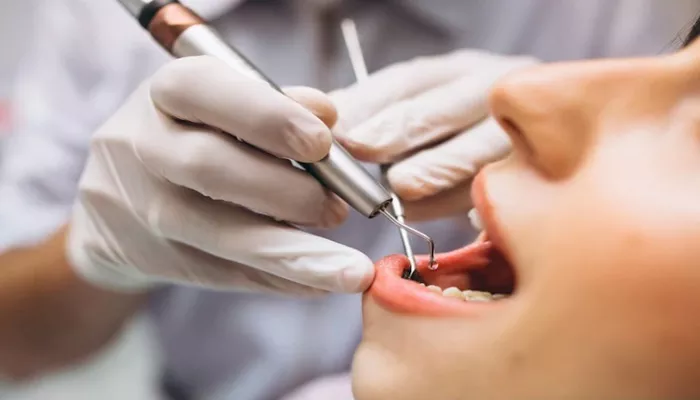Periodontal disease, also known as gum disease, is a common condition affecting millions worldwide. It involves inflammation and infection of the tissues surrounding and supporting the teeth, leading to potential tooth loss if left untreated. Understanding who is more prone to this condition is crucial for prevention and early intervention. This article will explore the various groups at higher risk of developing periodontal disease, focusing on lifestyle factors, systemic conditions, and demographic characteristics.
Understanding Periodontal Disease
Periodontal disease is primarily caused by the buildup of plaque—a biofilm containing bacteria—on the teeth. However, not everyone develops gum disease despite the presence of plaque. The susceptibility to periodontal disease varies significantly among individuals due to a combination of modifiable and non-modifiable risk factors.
Modifiable Risk Factors
Modifiable risk factors are those that can be changed by the individual to reduce their risk of developing periodontal disease. These include:
Smoking and Tobacco Use: Tobacco use is one of the most significant modifiable risk factors for periodontal disease.
Smokers are more likely to develop severe gum disease and have poorer outcomes from treatment compared to non-smokers.
Poor Oral Hygiene: Regular brushing and flossing are essential for removing plaque and preventing gum disease.
Individuals who neglect these practices are at a higher risk.
Alcohol Consumption: Excessive alcohol consumption can impair the immune system and increase the risk of periodontal disease.
Stress: Chronic stress can weaken the immune system, making it harder for the body to fight off infections, including those that cause gum disease.
Diet and Nutrition: A diet lacking essential nutrients, particularly vitamins and minerals like calcium and vitamin D, can affect oral health negatively.
Non-Modifiable Risk Factors
Non-modifiable risk factors are those that cannot be changed by the individual. These include:
Age: The risk of periodontal disease increases with age. Older adults are more likely to have gum disease due to cumulative exposure to risk factors over time.
Genetics: Some people are genetically more susceptible to periodontal disease. This susceptibility can affect how the immune system responds to oral bacteria.
Systemic Diseases: Conditions like diabetes, obesity, and cardiovascular disease are linked to an increased risk of periodontal disease.
Groups More Prone to Periodontal Disease
1. Smokers and Tobacco Users
Smokers and users of other tobacco products are at a significantly higher risk of developing periodontal disease. Tobacco use impairs blood flow to the gums, reduces the immune response, and makes it harder for the body to heal from infections.
Smokers are also less responsive to periodontal treatments and are more likely to lose teeth due to gum disease.
2. Older Adults
As people age, their risk of developing periodontal disease increases. Over 70% of Americans aged 65 and older have some form of gum disease. This increased risk is due to a combination of factors, including cumulative exposure to plaque, reduced immune function, and the presence of other systemic diseases that become more common with age.
3. Individuals with Poor Oral Hygiene
Those who do not practice regular oral hygiene, such as brushing and flossing, are more likely to develop gum disease. Poor oral hygiene allows plaque to build up, leading to inflammation and infection of the gums.
4. People with Diabetes
Diabetes is a significant risk factor for periodontal disease. Individuals with diabetes are more susceptible to infections, including those that cause gum disease, due to impaired immune function. Furthermore, severe periodontal disease can worsen diabetes control by increasing inflammation in the body.
5. Individuals Under Stress
Chronic stress can weaken the immune system, making it harder for the body to fight off infections, including those that cause gum disease. Stress can also lead to behaviors that increase the risk of periodontal disease, such as neglecting oral hygiene or consuming a poor diet.
6. Those with a Poor Diet
A diet lacking essential nutrients can impair oral health. Nutrients like calcium and vitamin D are crucial for maintaining healthy bones and teeth, while antioxidants help protect against inflammation.
7. Individuals with Genetic Predisposition
Some people are genetically more susceptible to periodontal disease.
This genetic predisposition can affect how the immune system responds to oral bacteria, making some individuals more prone to developing severe gum disease despite good oral hygiene practices.
8. People with Systemic Diseases
Conditions like obesity, cardiovascular disease, and osteoporosis are linked to an increased risk of periodontal disease.
These systemic diseases can impair the body’s ability to fight off infections and maintain healthy tissues.
9. Individuals with Socioeconomic Challenges
People from lower socioeconomic backgrounds may face barriers to accessing dental care, leading to untreated oral health issues, including periodontal disease. Additionally, lifestyle factors associated with socioeconomic status, such as smoking and poor diet, can further increase the risk.
10. Pregnant Women
Pregnancy can increase the risk of gum disease due to hormonal changes that affect the gums’ response to plaque. Pregnant women are advised to maintain good oral hygiene and visit their dentist regularly to prevent complications.
Conclusion
Periodontal disease is a complex condition influenced by a variety of factors, including lifestyle choices, systemic health, and demographic characteristics. Understanding these risk factors is crucial for prevention and early intervention. By modifying lifestyle factors and managing systemic conditions, individuals can significantly reduce their risk of developing periodontal disease. Regular dental check-ups and good oral hygiene practices are essential for maintaining healthy gums and preventing the progression of gum disease.

